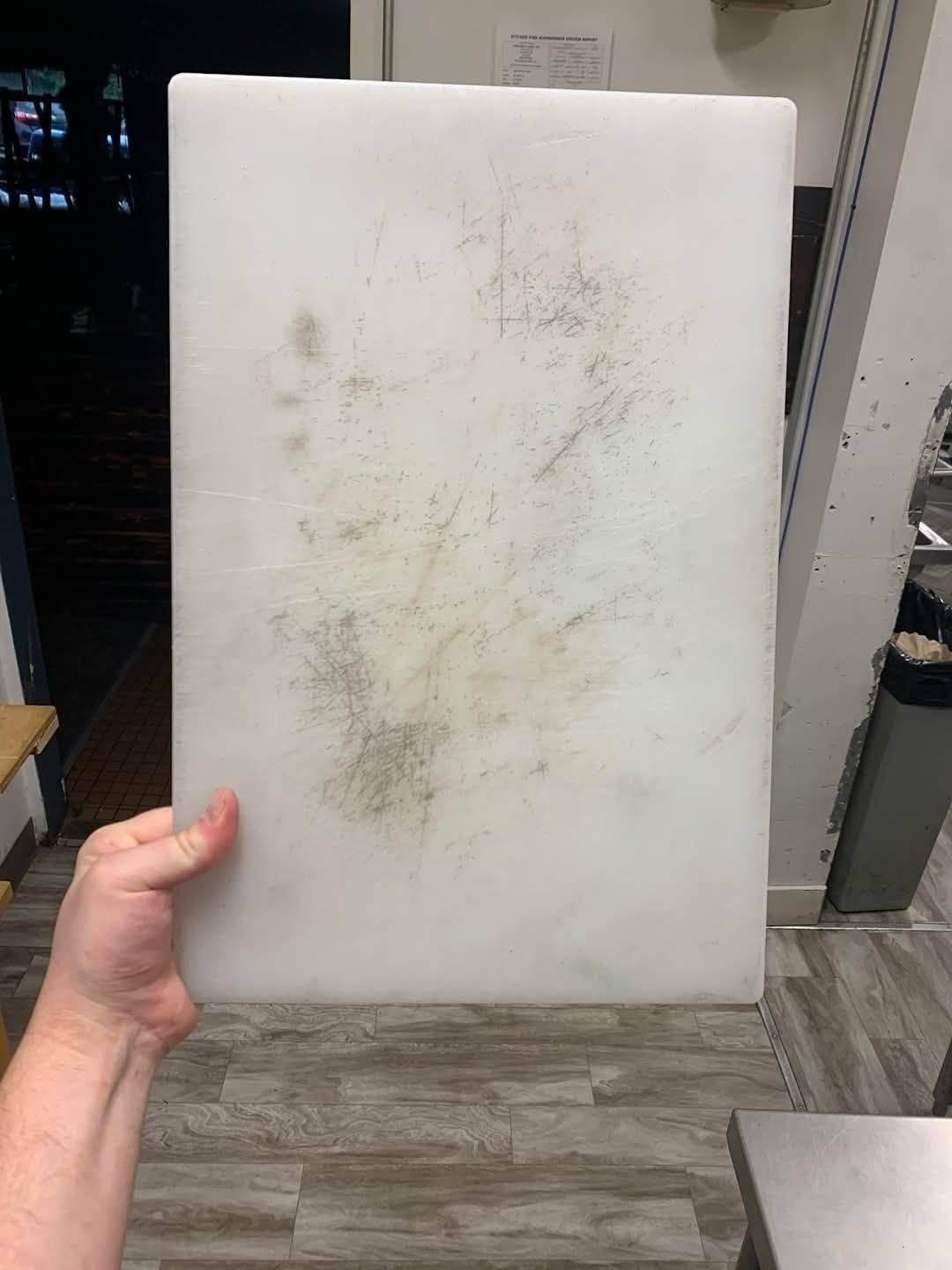ADVERTISEMENT
**Instructions:**
1. Sprinkle a layer of baking soda over the entire cutting board.
2. Pour white vinegar over the baking soda. You will notice bubbling as the two ingredients react with each other.
3. Let the mixture sit for 5-10 minutes. The fizzing action helps lift stains and grime from the surface of the board.
4. Scrub the board with a sponge or cloth, focusing on the most stained or odor-affected areas.
5. Rinse thoroughly with warm water and dry the board.
This method is particularly useful for breaking down tough stains and neutralizing strong food odors. It’s a simple, non-toxic way to bring your cutting board back to life.
#### 3. **Lemon and Salt Scrub**
Lemon is naturally acidic, which makes it an effective agent for breaking down grease and stains on plastic cutting boards. Combined with salt, it creates a gentle abrasive scrub that can work wonders on both discoloration and odors.
**What You’ll Need:**
– 1 lemon
– Salt (preferably coarse salt)
– Sponge or cloth
**Instructions:**
1. Cut a lemon in half and squeeze the juice onto the cutting board.
2. Sprinkle a generous amount of salt over the lemon juice.
3. Use the cut half of the lemon to scrub the salt and juice into the board, focusing on any stained or particularly smelly spots.
4. Let it sit for 10-15 minutes, allowing the acidity to work on the stains.
5. Rinse the board with warm water and scrub again with a sponge if necessary.
6. Dry the cutting board.
The salt acts as a natural abrasive, while the lemon juice helps to break down stains and neutralize odors. This method is especially useful for boards that have absorbed strong smells from things like garlic or onions.
#### 4. **Hydrogen Peroxide for Stains and Disinfection**
Hydrogen peroxide is an excellent disinfectant and stain remover. If your plastic cutting board has developed stubborn stains or has been used to cut raw meat, hydrogen peroxide can help sanitize and restore the board to its original condition.
**What You’ll Need:**
– Hydrogen peroxide (3% solution)
– Sponge or cloth
**Instructions:**
1. Pour a small amount of hydrogen peroxide onto the cutting board.
2. Let the peroxide sit on the board for a few minutes to break down stains and bacteria.
3. Use a sponge or cloth to scrub the board gently.
4. Rinse the cutting board with warm water and dry it thoroughly.
Hydrogen peroxide is a non-toxic and safe way to disinfect your cutting board and eliminate any lingering bacteria or stains from raw meats or other foods.
#### 5. **Sandpaper for Deep Scratches**
Over time, plastic cutting boards can develop deep grooves and scratches, which can make cleaning more difficult. If your board has significant knife marks, you can use fine-grit sandpaper to smooth out the surface and reduce the depth of the grooves.
**What You’ll Need:**
– Fine-grit sandpaper (around 220 grit)
– Water
**Instructions:**
1. Wet the sandpaper with a small amount of water to reduce friction.
2. Gently sand the surface of the cutting board, focusing on the areas with deep grooves or scratches.
3. Rinse the board to remove any debris created by the sanding process.
4. Wash the cutting board with warm soapy water and dry it thoroughly.
Sanding your cutting board can help restore its smooth surface, making it easier to clean and reducing the likelihood of food and bacteria getting trapped in deep scratches.
### Preventing Future Stains, Scratches, and Odors
To keep your plastic cutting board in top condition for years to come, it’s important to establish habits that prevent future damage. Here are some tips for maintaining your board:
1. **Use a Cutting Board for Specific Tasks**: Consider designating specific boards for certain tasks (e.g., one for meat, one for vegetables) to prevent cross-contamination and odors from transferring.
2. **Oil Your Board**: While this is not necessary for plastic boards, you can apply food-safe mineral oil to keep the board’s surface smooth and reduce the appearance of scratches.
3. **Regular Cleaning**: Clean your cutting board after every use to prevent the buildup of grease, food particles, and bacteria.
4. **Use a Board Protector**: Consider using a cutting board mat or protector to prevent deep knife cuts and grooves.
### Conclusion
Plastic cutting boards are an invaluable kitchen tool, but they require regular cleaning and maintenance to ensure they remain functional and hygienic. Rather than buying a new board, you can easily restore your current one with simple cleaning methods using items you likely already have in your kitchen, such as baking soda, vinegar, lemon, and hydrogen peroxide. By following the steps outlined in this article, you can extend the life of your plastic cutting board and continue to use it for food preparation without worrying about stains, odors, or bacteria.
With a little effort and regular care, your plastic cutting board will stay in excellent condition and serve you well for years to come.
